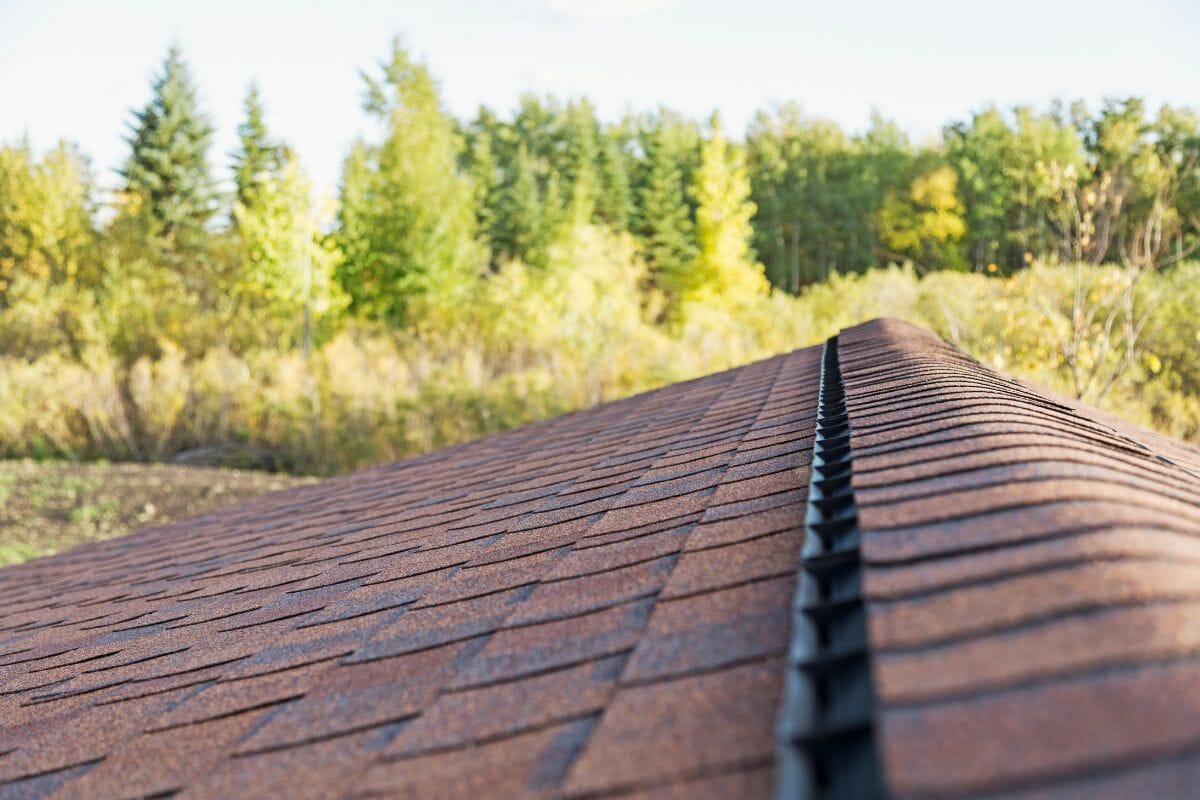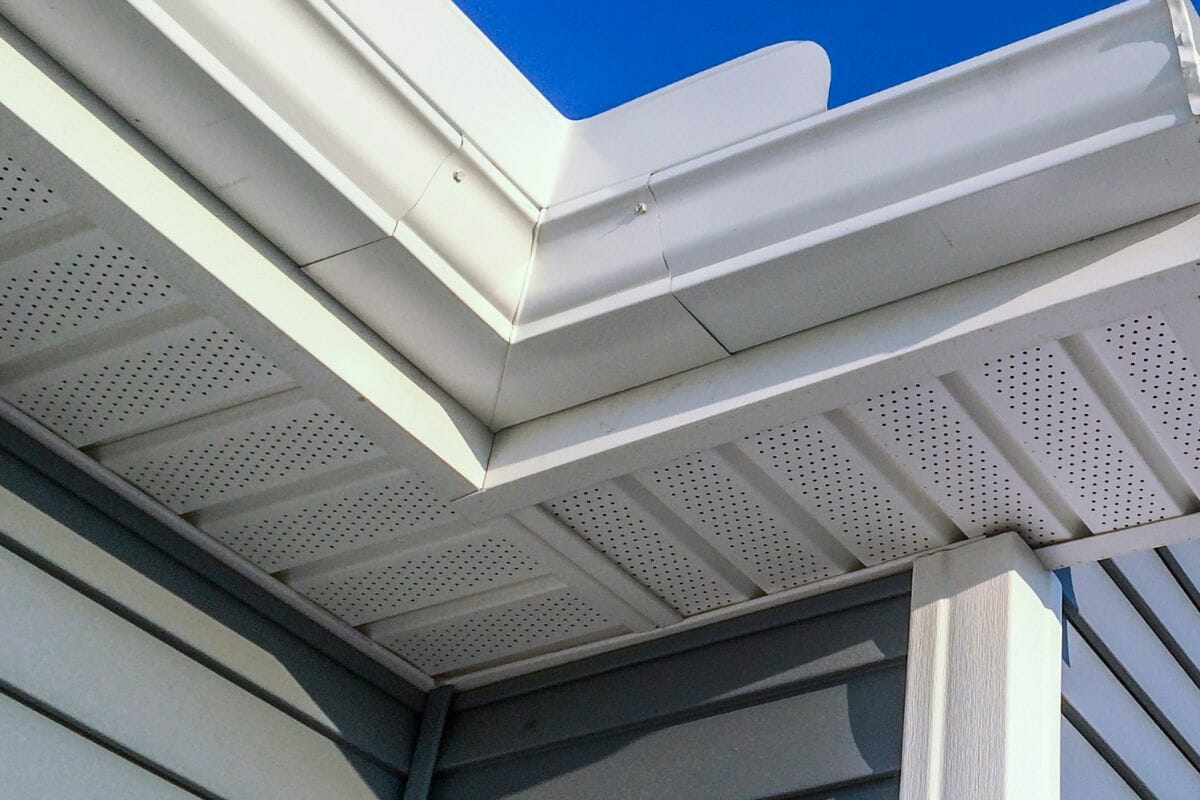Are you looking for a way to keep your home or attic comfortable and protected from the damaging effects of heat and moisture? Then, it’s worth investing your money and time in a roof ridge vent.
Roof ridge vents, which are installed along the peak of your roof, allow hot humid air to escape while allowing cooler, dry air, to enter and replace it. This way the roof ridge vent effectively regulates the temperature and moisture levels inside your building.
But how exactly does this process work? With our extensive research and critical analysis, we will delve into the workings of roof ridge ventilation. Additionally, we will demonstrate its effectiveness in this blog. Keep reading to learn more about the benefits of roof ridge ventilation.
How Roof Ridge Vents Work
Have you ever wondered how roof ridge vents work? Allow us to disclose the way in which they work to regulate the temperature and moisture levels inside your home or business.
Roof ridge ventilation systems allow hot, humid air to escape through a series of slats or louvers located along the peak, otherwise known as the ridge, of your roof. As the hot air rises inside your home, it reaches the roof ridge vent and passes through the slats, escaping to the outside.
A slat or louver is part of the roof ridge ventilation system. It is a horizontal or vertical strip of material, such as metal, plastic, or wood, allowing air to pass through while still providing protection from the elements.
Why the vent is exhausting hot air, cooler, dry air enters your building through other vents, such as gable vents or soffit vents, which are either located on the gable or soffit of your roof, like their names suggest. In this way, roof ridge vents work to improve the ventilation in your home and reduce the risk of damage caused by excess heat and moisture.

How Does A Roof Ridge Vent Work In Winter?
During the winter, warm air is still produced inside a building, even though the outside temperature may be cold. For example, body heat, cooking, and using hot water or a fireplace contribute to the production of hot, humid air inside a building. Without proper ventilation, this hot, humid air can become trapped inside and lead to an increase in temperature and humidity.
Roof ridge vents work to regulate the temperature and moisture levels inside a building year-round, especially during the winter months. In the winter, roof ridge vents help to prevent the buildup of excess moisture inside a building, which can lead to the growth of mold and mildew if not taken care of. Without roof ridge ventilation, your home is more likely to develop ice dams in the winter, due to an imbalance of temperature across the roofing system.
Does A Roof Ridge Vent Allow Water To Flow Inside The Home?
To prevent rainwater from entering the building through the roof ridge vent, the vent is typically designed with a sloping or angled surface. This helps to direct the rainwater away from the vent and towards the edge of the roof, where it can flow into the gutters and away from the building.
In addition, roof ridge vents are often coated with a waterproof material to help prevent water from entering through the vent. The coating helps to create a barrier that keeps the water away, even when it is raining heavily.
The roof ridge vents are designed to prevent rainwater from flowing inside a building while still allowing hot, humid air to escape. By using a combination of sloping or angled surfaces and waterproof coatings, roof ridge vents can effectively regulate the moisture levels inside a building.
Benefits Of Using A Roof Ridge Vent
Installed along the roof’s peak, serving the purpose of allowing hot air to escape, while allowing the cold air to enter the building, roof ridge vents have many advantages, which we have included down below.
1. Improves Temperature And Regulates Moisture
It is possible for the temperature inside a home to become uncomfortable if the building does not have proper ventilation, including a roof ridge vent. This can be frustrating for you and your family, and can also lead to damage to items in your home and your foundation.
Installing a roof ridge vent is one way to improve the ventilation in a building and help to regulate the temperature and moisture levels inside.
2. Reduces Risk Of Structural Damage
Proper roof ridge ventilation can help prevent the buildup of the excess moisture inside a building, which can lead to mold and mildew and can also cause damage to the building’s structure. By allowing hot, humid air to escape and cooler, drier air to enter, roof ridge vents help to regulate the moisture levels inside a building and reduce the risk of moisture-related damage.
Roof ridge ventilation can help to prevent ice dams by allowing the heat inside the building to escape, which also helps keep the roof temperature above freezing and prevent snow from melting and refreezing.
3. Reduces Energy Bills
Roof ridge vents can help to reduce energy bills by improving the ventilation in a building and reducing the need for air conditioning.
When a building is not properly ventilated, the heat and the warm air can become trapped inside, causing the temperature to rise. This can make a home or business feel stuffy and uncomfortable, causing the occupants to turn up the air conditioning in an attempt to cool the building down.
4. Increases Your Property Value
Proper ventilation, including the use of roof ridge vents, can increase the value of your property by improving the comfort and health of the occupants, and protecting the building from the damaging effects of excess heat and moisture.
Overall, proper ventilation, including the use of roof ridge vents, can increase the value of a property by improving the indoor environment and protecting the building from damage.
Other Ventilation Systems To Use With A Roof Ridge Vent
There are several other ventilation systems that homeowners commonly use combined with roof ridge vents to improve the ventilation in a home or building.
Soffit vents

Pairing soffit vents with roof ridge vents are an effective way to improve the ventilation in a building and regulate the temperature and moisture levels inside. When combined together, these ventilation systems can work to provide a balanced and efficient system for ventilating your home.
The function of soffit vents installed along the eaves of your roof is to draw in cooler air from outside to replace the warm air that is being exhausted. By combining soffit vents and roof ridge vents, humid air escapes from the top of the building through the roof ridge vents, while cooler, drier air enters the building through the attic fans.
Whole-house Fans
A whole-house fan is a type of ventilation system that is installed in the attic of a building. It consists of a large fan that is mounted to the attic ceiling and is used to draw hot, humid air out of the entire building and push it outside.
When the temperature or humidity inside the building reaches a certain level, the fan will turn on and start drawing hot, humid air out of the building. When the temperature or humidity drops to a certain level, the fan will turn off.
By combining whole-house fans and roof ridge vents, the temperature of the home decreases to a certain degree while humid air escapes from the top of the building through the roof ridge vents. Furthermore, the whole system allows cool air to enter the building, increasing the lifespan of the roof and the home structure.
Final Thoughts
Now that you understand the importance of installing a roof ridge vent on your home, combined with the other ventilation systems, you are able to make an informed decision on whether or not you want to add these vents to your home.
Roof ridge ventilation not only improves the quality of air in your home but also reduces the chance of your roofing system becoming damaged. The only thing you need to bear in mind is that you have to maintain the roof ridge ventilation system in a timely manner. As debris and dirt fall on your roof, it can block these vents and lead to complete system dysfunction. Due to this, ensuring these vents are kept clean and maintained is important.
If you are facing any issue related to the roof ridge ventilation system on your home, or any problem with your roof in general, you should contact our team immediately. At Division Kangaroof we are a professional team of roofers that have been serving homeowners in Georgia for 15 years. We would love to assist you with our expert skills and years of experience. We will walk you through different types of roof vents and install the best ventilation system for your home. Call us today at (706)-778-3516, for a free consultation and estimate.


